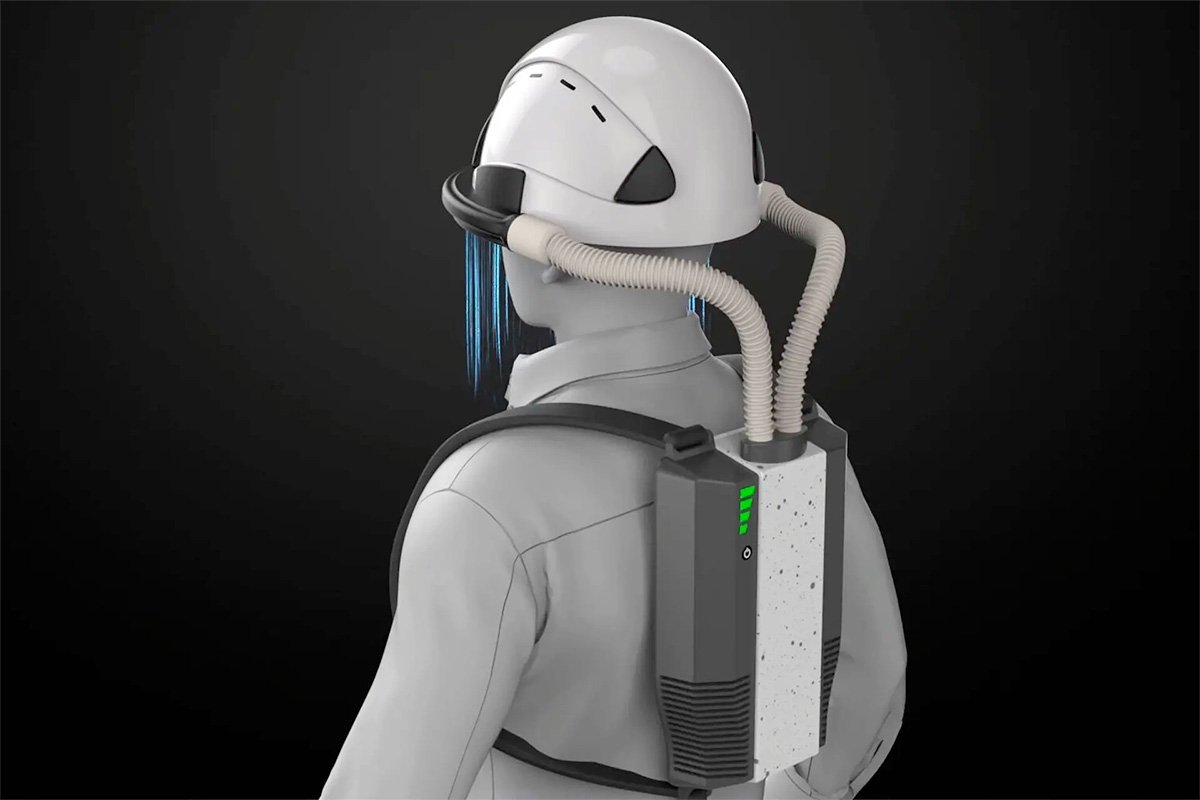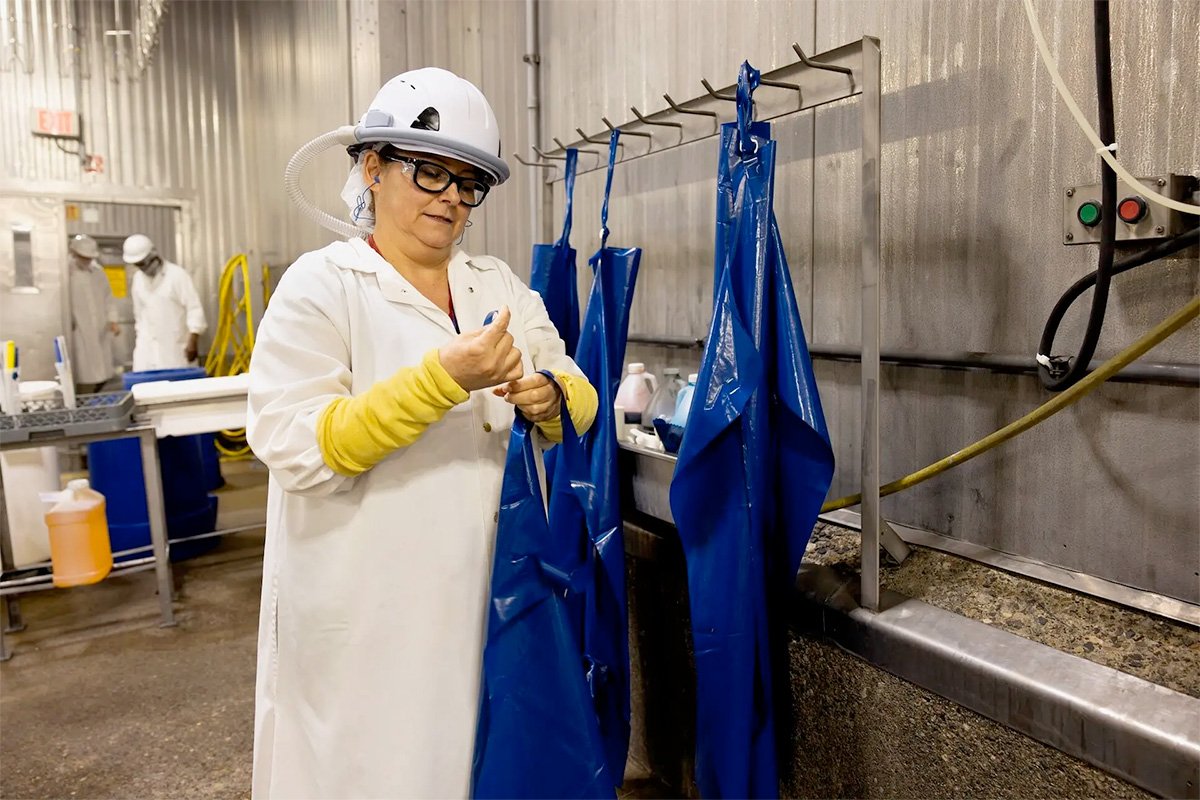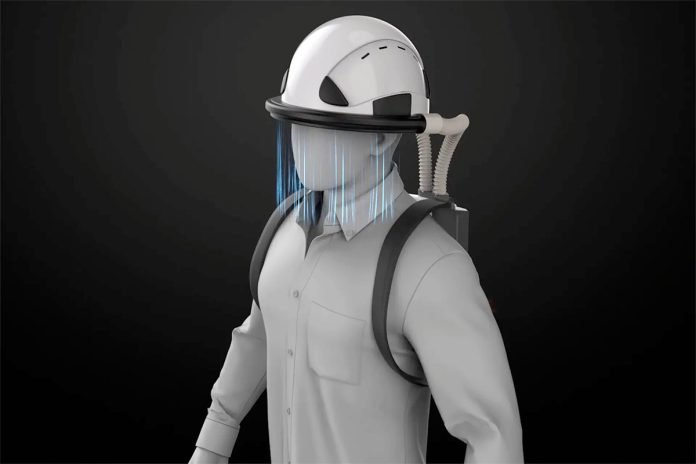A new device, known as the Worker Wearable Protection Device, has been developed to protect workers from airborne viruses while leaving their face mask-free. This innovative gadget, designed by a team at the University of Michigan led by Associate Professor Herek Clack, utilizes a curtain of pretreated air to block microbes. The device is currently being commercialized by Clack’s spinoff company, Taza Aya, with future plans for a smaller, consumer-friendly model.
The Worker Wearable Protection Device features a row of downward-facing air nozzles arranged in a visor that arcs around the front of a hard hat. These nozzles are connected by hoses to a 10-pound (4.5-kg) backpack that houses the device’s battery, electronics, air handling system, and a nonthermal plasma (cold plasma) module. This module generates ionized gas at low temperatures, effectively killing airborne viruses.
When activated, the wearable creates a particle-deflecting curtain of air that flows downward in front of the user’s face. Independent tests have shown that even without sterilization, this curtain blocks 99.8% of aerosols, including viruses, from reaching the wearer’s face. When the plasma pretreatment is included, the efficacy approaches 100%.
The technology is being trialed at the Michigan Turkey Producers poultry-processing plant. In such settings, workers are at high risk of respiratory virus transmission from both each other and the birds. Traditional paper masks were previously used but posed several challenges. These masks hindered communication on the noisy processing floor, caused safety goggles to fog up, and failed to maintain a secure facial seal throughout the day. They also had to be removed for eating and drinking, further reducing their effectiveness.

In contrast, the Worker Wearable Protection Device addresses all these issues. It allows for clear communication, prevents fogging of safety goggles, and provides continuous protection without the need to remove it for meals or drinks.
Taza Aya CEO Alberto Elli expressed satisfaction with the trial results, stating, “We are pleased with the study results as we embark on this journey. This real-world product and user testing experience will help us successfully launch the Worker Wearable in 2025.”

Source: University of Michigan, Taza Aya



